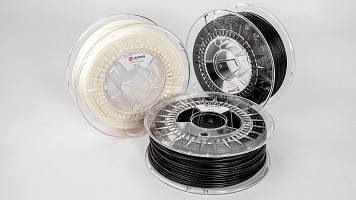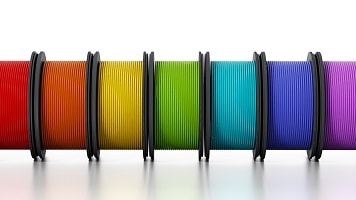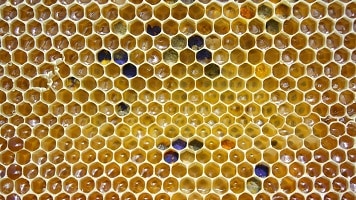- Printing BIG with the JUPITER SE – A Review - May 13, 2024
- Is a Wash & Cure Station Worth It? Creality UW-03 Review - April 29, 2024
- Z Seam | How to Hide & Avoid | Cura & PrusaSlicer - April 20, 2024
Disclosure: Links marked with * are Affiliate Links. I earn from qualifying purchases if you decide to make a purchase through these links – at no additional cost for you!
3D printing is often believed to be just a standardized process. But this is wrong. You can’t learn 3D printing unless you’ve studied the subject thoroughly.
This technology also brings with it various problems for various reasons, so it’s not always possible to achieve perfect printing results right away.
This is true, for example, when it comes to the problem of so-called “pillowing”, which is often observed on printed models. Both beginners and experienced users are often confronted with this problem.
Pillowing is only visible when the 3d printed object is almost finished. This results in faulty prints as well as wasted filaments and last but not least the futile effort of the users.
Pillowing occurs when the top layer(s) of the 3D print cools. To eliminate this problem, you can do these things:
- Applying a thicker top layer
- Increasing the infill percentage
- Reducing the printing speed
- Customize 3D printer cooling
- Increasing the distance between print head and building plate
In the following post, we will go into all these things in detail. First, you will learn what exactly “pillowing” is and how you can recognize it. Then you’ll get valuable tips on how to avoid this unpleasant phenomenon in your 3D printing in the future.
Table of Contents:
What is Pillowing in 3D Printing?
Pillowing is visible on the top layer of your 3D printing. When 3D pillowing occurs, the surface of the print model is too rough or even has small holes in the top layer.
Pillowing is one of the most common problems in the 3D printing community and can occur on any filament used. However, some materials are more likely to pillowing than others.
Of course, unsightly 3D printing should be avoided wherever possible. Pillowing is particularly frustrating because it occurs when your print is done and is difficult to correct. So it’s essential that you take some action before each print. Otherwise, you may regularly have to deal with faulty prints whose surface shows the pillowing.
Causes for Pillowing
If the term “warping” already means something to you, you will understand the effect of pillowing quite fast. Pillowing is very similar and the cause is not very different either.
The difference, however, is that pillowing occurs on the upper level, while warping occurs on the lower level. Parallel to warping, insufficient cooling is the problem – especially the top layers with pillowing. If the cooling is not sufficient, the print warps. The pillow-like structure forms because of the infill pattern. You can imagine the process like thermoforming the top layer onto the infill.
As mentioned before, pillowing can be observed on any type of filament, with some materials more than others.
Thin layers warp more easily. Because of this, 3D printers with a 1.75-millimeter filament are more affected by pillowing than 2.85-millimeter filament 3D printers.
Filaments that are more susceptible to 3D-pillowing
It’s true that any filament you can use can show the phenomenon of pillowing. However, the degree of severity also varies depending on the individual use of the filament during the printing process.
If you print with a material that is more susceptible to pillowing, you should take the necessary precautions to prevent it from happening in the first place.
Filaments with a high melting point
The different filaments also have different melting points. In 3D printing, it is important that the extruder temperature first reaches this specific temperature so that the molten filament can be easily extruded onto the printing bed.
Filaments with a higher printing temperature, such as ABS*, also do not cool down easily and take longer in their final form to cool down completely and become stiff.

Related Post:
ABS Filament Guide: 3D Printing Material Properties
Basically, each filament has to face a sudden difference in temperature when it leaves the hot end and can be very susceptible to possible warping at this point. Therefore filaments with a high printing temperature are more susceptible to pillowing than those materials that require a much lower temperature to melt.
If you are working with such a high-temperature filament, you should lower the temperature of the hot end as soon as the print completes the top layer. Additionally, you should install a fan and let it run at maximum power to further reduce the temperature.
In this way, you can ensure that the top layer cools down at the earliest after it has been applied to the previous layer and is therefore unable to enter the available spaces.

Related Post:
3D printer filaments – 40 filament Types Introduced
Soft filaments
Soft filaments can also increase the problem of pillowing. These are also very susceptible and can cause complications with the top layer of 3D prints.
These in turn can quickly destroy the entire print by deforming into a so-called pillow. However, there are several ways to counteract this. One possible solution, for example, is to use a higher filling rate.
Solutions for 3D-Pillowing
What all solutions for reducing or eliminating pillowing have in common is that the upper layer should be saved by reinforcement. There are different options available for this:
Applying a thicker top layer
The most obvious way to strengthen the top layer is to apply a thicker top layer, which is intended to make the surface robust and strong. Since this also works for warping, it should also help with pillowing and is also the easiest solution to the problem.
To prevent possible warping, simply set the bottom layer to a thicker value. In this way, you can ensure a higher mechanical resistance to the thermal stress caused by the filament cooling. In this way, you can also prevent pillowing. In this case, you increase the thickness of the top layer to help it maintain its deformation resulting from the cooling of the material.
But how thick should the top layer be to effectively prevent pillowing? To determine the optimal layer height, you can follow your simple formula:
The layer thickness of the top layer should be about five to six times thicker than the layer thickness of the other layers. If you have set your standard layer height to be particularly thin, it is possible, however, that it will not work this way.
You might also have to increase the height of the top layer more than six times. With your slicer, you can easily adjust the settings of the top layer. Try different settings to find out what works best for your print object.
Increasing the filling percentage
As already mentioned, pillowing is particularly likely to occur when the weight of the covering layer turns out to be unacceptable in itself, allowing the material to enter the spaces between the individual layers.
Then the filament finds a way through the small gaps between the filling structure, which favors pillowing in this case.
A filling of 12 percent is already enough for you to produce your print models without any problems. However, if pillowing occurs regularly, you should increase this filling percentage to 25 percent to prevent it.
Although this is a simple solution, it is usually used by users as a last resort to remedy pillows that occur. The corresponding settings can be easily adjusted in the slicer software, but there are also consequences.
The amount of filament required for printing increases as does the required printing time. Therefore, if you are looking for high printing speed and cost savings by using as little filament as possible, this solution may not be of much interest to you.
Reduction of the printing speed
If you notice the appearance of pillows, which in turn cause holes, these are created by the upper layer buckling under its own weight. However, these holes can be completely removed.
To do this, it is necessary to lower the printing temperature only for the top layer. This allows the layer to harden quickly and at the same time make it stiff and strong. In addition, the lower temperature has no effect whatsoever on the adhesion of the layer, since this is the last layer of the print model.
Note, however, that you need to adjust the print speed to the changes in the print temperature. So make sure that the printing is completed without problems and that there is no under-extrusion. If you do not take this into account, the nozzle may become blocked before the printing process is completed.

Related Post:
PLA Printing Speed: How to Find the Optimal Settings
Customize 3D Printer Cooling
This measure can be used as an alternative or in addition to lowering the printing temperature of the upper layer. Increasing the cooling of your 3D printer allows the top layer to cool and cure as quickly as possible. To do this, set the cooling of your fan to the maximum setting.
However, if you think that printer cooling alone is not enough to combat pillowing, you can also use a desktop fan to provide additional cooling for the top layer.
Increasing the distance between print head and building plate
If you increase the distance between the print head and the building board, this will cause the top layer to cool down as quickly as possible and prevent pillowing.
The reason for this is that the nozzle temperature is very high and therefore the ambient temperature is also increased accordingly. However, if you remove the print head slightly from the building platform, the ambient temperature remains unaffected.
For this action, you should already have some experience with a 3D printer, since improper execution can also cause problems such as poor layer adhesion.
Related Questions
What is warping and why does it happen?
If a part of the print object bends upwards, this results in distorted 3D printing. This problem is particularly acute when the temperature differences between the layers of extruded plastic are too great.
This creates stresses within the model. If these become too strong, the lower layers begin to warp or rise, causing distortion. During heating, the thermoplastics used not only expand in liquid form but also completely enlarge in shape.
If the liquid filament cools down again, it becomes a solid and the entire structure shrinks. This transformation creates movement in extruded plastics, which is considered the cause of 3D printing distortion.
Colder layers pull on the still hotter layers. If this occurs while the hotter layers are underneath the colder layers, the object starts to curl. This effect is also called “warping”.
If it were possible to keep the entire 3D-printed object at exactly the same temperature at all times, there would be no distortion. However, it is only possible to keep the temperature of the printed model as uniform as possible so that the object sticks to the surface of its structure without warping.
What does hygroscopy mean and how does it affect print quality?
If filaments are exposed to moisture, problems with print quality often occur afterwards. This is due to the so-called hygroscopy, the absorption of moisture by the filaments.
Since most filaments are hygroscopic by nature, they naturally absorb moisture in the air. However, this property is a factor that can have a significant negative impact on 3D print quality. Unfortunately, moisture in the printed material is not visible from the outside.
When the filament is heated at the hot end of a 3D printer, however, this is reflected in the formation of unsightly bubbles. Other visible consequences are jams in the extruder, brittle, soft or fragile printed objects and insufficient adhesion to the printing bed.
Which materials are most affected by hygroscopy?
In general, all printing materials are somewhat hygroscopic. Therefore, filament should always be stored correctly and additionally dried if necessary.
However, ABS*, nylon*, PC*, PETG*, PVA*, TPU* and many other flexible filaments have proven to be particularly hygroscopic. PLA*, ASA* and polypropylene (PP*) are considered less hygroscopic.
Conclusion
Initially, it can be difficult for the user to become familiar with the technology of a 3D printer. Over time, however, you’ll have a wide range of experiences with faulty or completely failed prints and you’ll learn which general printer and slicer settings will produce the desired results.
If the problem is pillowing, it is first important to identify this problem and determine the cause. Once you have found the right solution for you, you will be able to continue to make successful prints.
Since pillows appearing on the surface relatively late, the printing cannot be stopped. This makes it all the more important that you contain the problem before it can occur and take appropriate preventive measures. As long as you focus on the top layer and apply these solutions, there is nothing to stop flawless 3D printed models.
Disclosure: This website is the property of Martin Lütkemeyer and is operated by Martin Lütkemeyer. Martin Lütkemeyer is a member of the Amazon Services LLC and other Affiliate Programs. These are affiliate advertising programs designed to enable websites to earn advertising revenue through advertising and linking to Amazon.com and others. Links marked with * are affiliate links.


